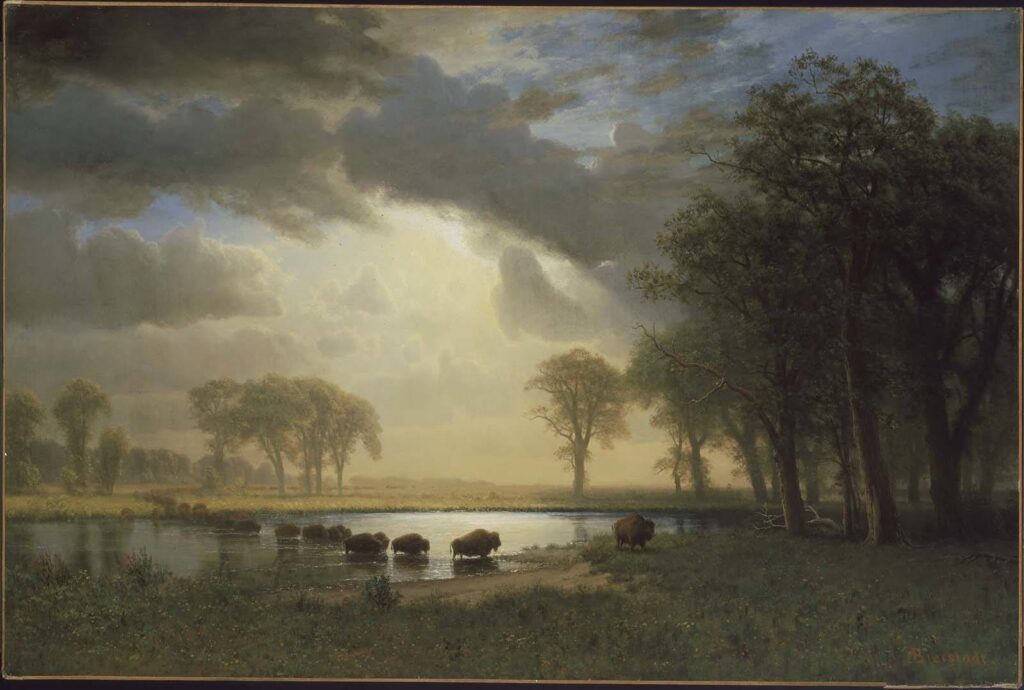By Jona Tucker
Albert Bierstadt wasn’t born when Thomas Nuttall traveled into what became Arkansas and Oklahoma in 1819, but the Gilcrease Museum’s exhibition Albert Bierstadt: Witness to a Changing West currently on display in Tulsa (through February 10) is a great place to start your new year and the Thomas Nuttall bicentennial.
Bierstadt was born in Prussia in 1830 and immigrated to the U.S. with his parents in 1831. His first trip to the western United States was in 1859—forty years after Nuttall’s travels into Arkansas Territory. What did Albert Bierstadt know of Thomas Nuttall? Even though Bierstadt didn’t travel through Arkansas Territory, did he read Nuttall before traveling west? Their viewpoints and sympathies seem similar. Nuttall or Bierstadt scholars who know, please tell.

(The Buffalo Trail, from the Museum of Fine Arts, Boston)
The place to start thinking about Thomas Nuttall in the context of the Bierstadt exhibition is The Buffalo Trail. On loan from the Museum of Fine Arts, Boston, it is the first painting you see in the Gilcrease exhibition. This painting could be of a floodplain in nineteenth century (what became) Choctaw and McCurtain Counties, or of a prairie cove in the Kiamichi River valley. It could be an oxbow lake along the Poteau River in Le Flore County if painted plein air with your back toward Sugarloaf and Cavanal. Use your imagination. This is what southeast Oklahoma looked like when Nuttall was following bison trails to and from the Kiamichi River’s confluence with the Red. I went to the Bierstadt exhibition with two childhood friends. We’ve always loved this painting and it was wonderful to see the gorgeous original. We stood in the museum looking at The Buffalo Trail and picked our “spot” to watch the animals crossing the water. We choose a place in the shadows near a log we would first check for a napping timber rattlesnake or copperhead. You know the part of the log that touches the ground will be teeming with Bessie bugs. The short-sighted bison might miss us in the gloom underneath the trees. If they spot us, we can scramble up a tree (they’re mostly American elm, IMO) to the first vee. I am sure Aristolochia tomentosa is growing up there. That’s how rich Bierstadt’s paintings are: you can step into the canvas and place yourself inside this vanished world.
George Catlin was even closer to Nuttall’s time than Bierstadt’s and some of this amazing paintings are part of the exhibition too. Also not to be missed while thinking about Thomas Nuttall at the Gilcrease: John James Audubon’s fierce wild turkey and Charles Bird King’s beautiful, haunting portraits.
2019 will be the 200 year anniversary of Thomas Nuttall’s travels through this part of the world. Read his journal and visit the Gilcrease Museum’s Albert Bierstadt exhibition (hurry—it goes dark February 11) to travel back in time to the early nineteenth century. https://gilcrease.org/exhibitions/bierstadt/
